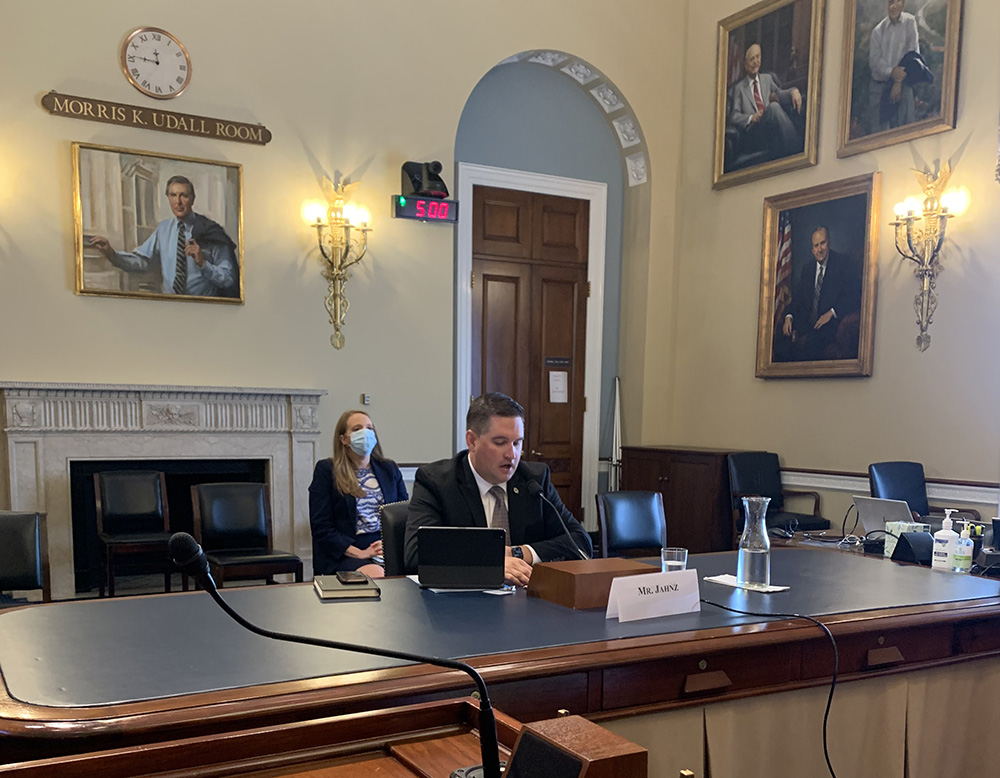
The best way to preserve the struggling monarch butterfly is through voluntary conservation efforts rather than government regulation, a Minnesota electric cooperative CEO told a House panel Thursday.
“Our goal is to protect this iconic species for posterity,” said Justin Jahnz, CEO of East Central Energy, in testimony before the House Natural Resources Subcommittee on Water, Oceans and Wildlife. “Collaboration is key; restrictions are not.”
After creating a unique “monarch waystation” on its property, East Central Energy became the first rural electric cooperative to receive a certificate of inclusion from the U.S. Fish and Wildlife Service into the Monarch Butterfly Candidate Conservation Agreement with Assurances.
As part of the CCAA, dozens of energy companies and state transportation departments are developing monarch-friendly practices on millions of acres. Their voluntary actions could prevent the need to list the monarch under the federal Endangered Species Act. Applicants that are approved won’t face penalties if they unintentionally harm a monarch.
The monarch population has declined by about 90% since the 1990s. The species is famous for its spectacular fall migration, which takes the butterflies from as far north as Canada to central Mexico, where most spend the winter.
East Central Energy set aside two 2-acre plots for habitat for the monarchs and other pollinators at its Braham headquarters two years ago.
“We have some walking trails around the perimeter, and the area is enjoyed by employees on their breaks,” Jahnz said. “Our next steps will be sitting areas, ID tags for unique species and signage for public awareness. We have published videos on how to identify the native plants…and plan to have seed collection days for employees to start their own habitat projects at home.”

“The area will also serve to be an accurate demonstration of the type of ecosystem we are trying to achieve on our 25,000 acres of land—including over 5,000 miles of maintained right of way—property that belongs to our members,” he said.
The 63,000-member co-op has implemented other conservation measures, including creating ecological diversity through its vegetation management plan and installing pollinator habitat instead of manicured lawns at its substations.
Immediate, emergency protections for the monarch under the Endangered Species Act “would be devastating” because it would close enrollment in the voluntary conservation agreement, Jahnz said. The Fish and Wildlife Service announced last December that listing the monarch as threatened or endangered was warranted, but the agency delayed action due to other, higher-priority species in more urgent peril. It plans to review the butterfly’s status in fiscal 2024.
“If more entities were to enroll in the CCAA, we are hopeful that we can recover the monarch population and avoid a listing decision in the future,” Jahnz said.
“ECE believes that through collaboration, education, and awareness, electric cooperatives can begin to focus on a future where pollinator habitat is synonymous with utility vegetation management. In that future, healthy ecosystems can exist under every power line, and work as nature intended while also providing safe and reliable electricity and protecting the bottom line.”
Erin Kelly is a staff writer for NRECA.